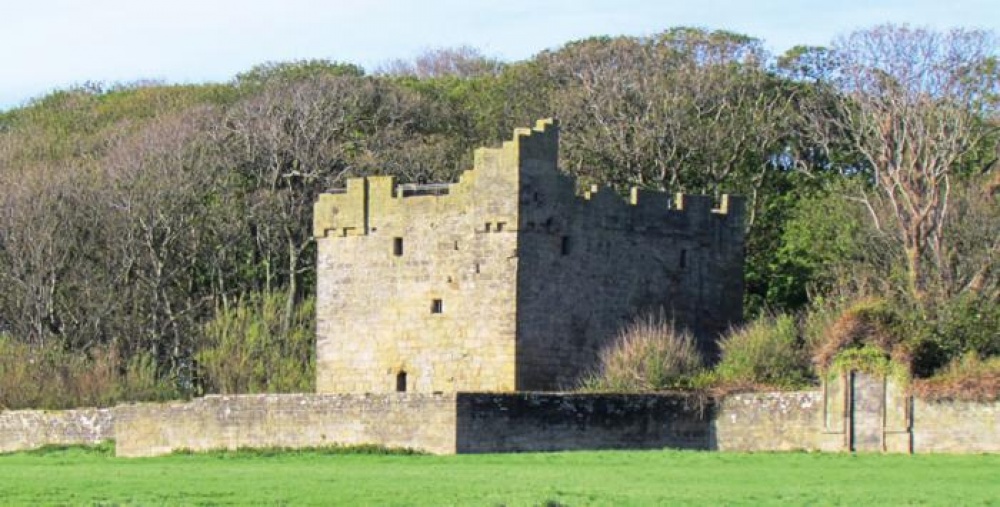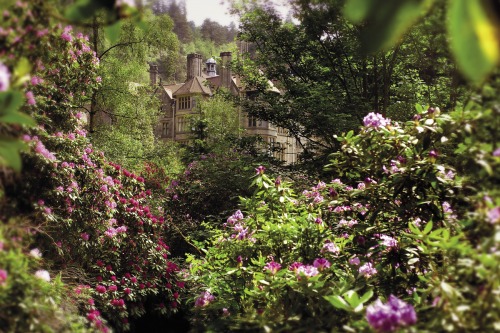Restoration and Renovation of Cresswell's Pele Tower

The humble pele tower represents a unique part of Northumberland’s history, yet many of these buildings have fallen into ruin and will soon disappear all together. But after receiving crucial funding, the tower has been thrown a lifeline
Cresswell Pele Tower was originally built in the 14th century, but after bracing itself against the coastal elements for hundreds of years the tower was slowly falling into disrepair. Finding itself on Heritage England’s ‘At Risk Register’, the building was marked out as needing urgent attention, or else risked being lost from the nation’s heritage forever.
Luckily it has received vital funds from the Heritage Lottery Fund, Northumberland County Council, and the Big Local programme, as well as private donations, giving this historic structure a second chance. The pele tower is now due to undergo extensive restoration and renovation to create a fresh, new visitor attraction in the village.
First constructed in the Middle Ages, the pele tower was built to defend the Cresswell family and local villagers from the constant threat of lawless Border Reivers. We spoke to Barry Mead, local historian, archeologist and Assistant Project Manager for the structure’s restoration, about the tower’s early life.
‘Pele towers are miniature castles that you only really find in Northumberland, Cumbria and the Scottish Borders,’ says Barry. ‘They date back to the time of the Border Reivers from the 13th to the 17th centuries, when this part of Northern England was completely lawless – neither Scotland nor England had control over the area so it was a bit of a free for all.
The Reivers were families from both the English and the Scottish sides who were notorious for horrific behaviour. The towers were a defence against pillaging, rape and murder – the Cresswell family and the local community would pile into Cresswell Pele Tower for a day or two to escape the prevalent threat. Pele towers also acted as a defence against marauding pirates in the Middle Ages, anchoring at Druridge Bay.’
Barry has a personal connection to the project. Having lived in Cresswell for the last 10 years, he has worked on historic projects across the North East, including Woodhorn Colliery in Ashington. His work to inspire local communities and bring them closer to their heritage led to him winning the national Community Archaeologist of the Year 2018 award.
The Cresswell Pele Tower restoration will be Barry’s final hurrah in preserving our history. ‘The tower will be my last project. After 40 years of digging, it was amazing to win an award that’s recognised nationally. I felt extremely proud, but the award wasn’t about my own skills, it was about engaging others in the field of archaeology,’ he says.
When the call came to be involved in the huge task of repairing the ruined Pele Tower, Barry wasn’t sure he would be able to take it on. ‘To be honest, I turned it down. But I look out of my window at home and see the tower every day, and I just thought, “how often am I going to get the chance to preserve a pele tower on my doorstep?” I’ve been working on the project for the past five years now.’
The Cresswell family were a significant part of the local community for centuries. In the 18th century, the family decided to build a mansion house against one side of the pele tower, knocking thorough into the tower itself. From Barry’s own research and archaeological digs, he discovered more about the family during this time.
‘The Cresswell family clearly had a lot of money at their disposal, mostly earned from the farming taking place on their land,’ he says. ‘During our excavations of the pele tower we found a lot of broken 18th-century glass wine bottles amongst the debris, so we think it’s likely that the Cresswells used the lower floors of the pele tower as a rather well-stocked wine cellar.’
Despite the grandeur of the Cresswell’s mansion house, they were soon looking to expand their property portfolio. ‘In 1818, Addison Cresswell married a lady called Elizabeth who inherited a fortune from one of her cousins who’s surname was Baker.
The Cresswells then became the Baker-Cresswells and suddenly they had a lot more money to spend,’ explains Barry. ‘The opulent mansion house mustn’t have been luxurious enough, as the family decided to build Cresswell Hall about half a mile away in the village. The mansion house was then demolished in the 1840s – so it was standing for less than a hundred years in the end, despite all the money they originally put into it.’
Luckily the pele tower survived, yet its relevance to the Cresswell family changed once again. ‘We think they kept the pele tower as a folly in the grounds of Cresswell Hall – it was like a novelty garden feature really,’ laughs Barry. ‘You can still see the carriageway which linked Cresswell Hall to the tower today, along with stone mounting blocks – on a sunny day the Cresswell family and their guests would take a carriage down the half mile-long track, through landscaped grounds, to go for a stroll around the tower.’
Although the Cresswell family have now dispersed, some locals believe certain inhabitants never left the tower. The White Lady of Cresswell has made her ghostly presence known to a number of Cresswell’s villagers. ‘The story goes that the White Lady was in love with a handsome Danish Prince, but the lady’s family didn’t approve of the romance,’ says Barry.
‘One day, awaiting the prince’s return from sea, the lady climbed onto the roof of the tower to look out for his ship. The ship anchored in nearby Druridge Bay and the prince rushed ashore to meet her, whilst the lady rushed down to meet the prince. But before they could embrace, the lady’s two brothers ambushed the prince and cut him down with their swords. The lady witnessed the horrific murder and was devastated, eventually dying of a broken heart.’
‘I get enquiries from Cresswells all around the world now,’ says Barry. ‘Just last year I was working with some volunteers in the woodland next to the tower when two gentlemen appeared. It turned out they were Cresswells visiting from New Zealand, following the New Zealand rugby team on tour. They thought they would pop up to the village on the off chance and luckily I was there to unlock the tower and give them a guided tour – they were delighted.’
Not only does the pele tower at Cresswell have an important significance for the family’s descendants, it is also a vital part of the local community. This was evident when over 70 volunteers turned up to help with excavation digs and to explore surrounding ploughed fields, looking for buried artefacts. Steve Lowe was excited to see what he could help uncover about the tower’s history. ‘My favourite find was a broken Victorian garden gnome, but it didn’t quite make the grade as a significant discovery.’
‘Excavations on the site of the tower revealed a variety of exciting finds, including the foundations of the former mansion house,’ says Steve. ‘We also uncovered fascinating glimpses into a much earlier community, with discoveries of prehistoric remains and almost purely by chance, two Bronze Age stone burials – both made for children over 4,000 years ago.’
Working with a number of local schools, the project is also hoping to teach the next generation about the history of Cresswell Pele Tower. ‘We learn about ourselves from our history and our heritage. It’s one of the most important things to me, but perhaps I’m biased as a historian,’ laughs Barry. ‘So we’re very excited that we’ve got the opportunity to preserve this building for future generations.’
With the aim to finish the restoration and renovation by May 2020, the team will have their work cut out for them over the next year, but the Project Leader, Michael Wright, is positive that this will be a fantastic addition to the village.
The tower will be transformed into a small museum, which will interpret the building’s past and the history of Northumberland’s pele towers. ‘We’ll be able to open the tower to the public for the first time in years,’ says Michael. ‘It’ll also become an exciting new event space which will be available to use for weddings, arts and crafts exhibitions, and possibly some ‘themed nights’ as well, including medieval evenings or musical entertainment.’
Michael can hardly believe he’s working on a project which holds such a significant place in his own childhood memories. ‘I used to come to the tower as a lad, but you could only view it from a distance. Back then, I never imagined that I would be leading the tower’s restoration. The reaction we’ve received has been amazing, and as a focal point in Cresswell village, the new attraction will be great for local business.’
Bringing together past and present, local communities and visitors, Cresswell Pele Tower is set to become an integral hub in South East Northumberland. The significant restoration will extend beyond the walls of the pele tower itself, as plans are underway to restore the adjacent Victorian walled garden and to manage the surrounding woodland, allowing visitors to enjoy the green space around the site.
www.cresswellpeletower.org.uk










